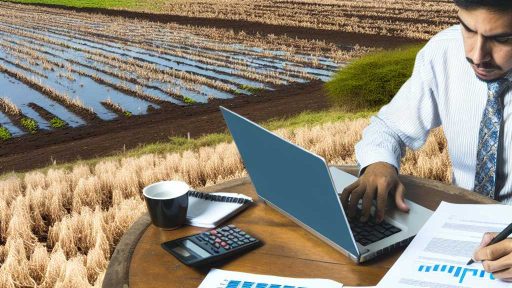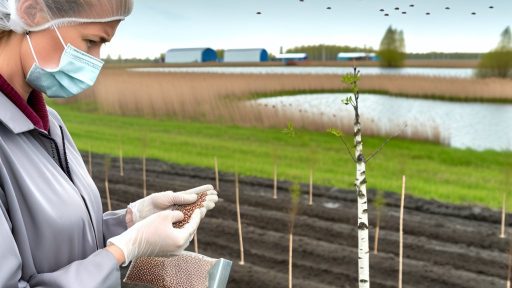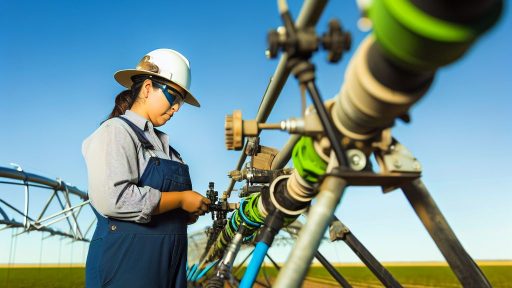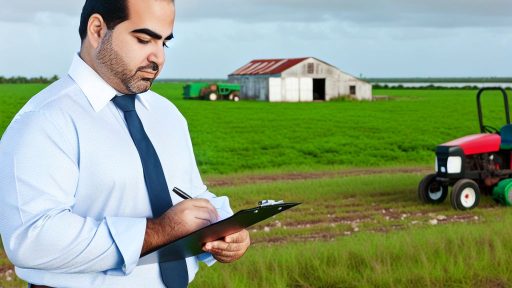Introduction to Climate Change and Its Relevance to Agriculture
Climate change significantly impacts agriculture globally.
It alters weather patterns and affects crop yields.
Farmers face challenges such as extreme temperatures and droughts.
Additionally, heavy rainfall can lead to soil erosion.
These changes threaten food security and the agricultural economy.
Understanding Climate Change Effects
Climate change leads to unpredictable farming conditions.
Farmers must adapt to shifting weather patterns.
This includes changing planting schedules and crop varieties.
Moreover, pests and diseases may become more prevalent.
Farmers must invest in research and technology for solutions.
The Economic Impact on Agriculture
Climate change can reduce crop yields significantly.
This reduction directly affects farmers’ income.
As a result, land values may fluctuate based on productivity.
Investors increasingly consider climate risk in their decisions.
Understanding these dynamics is crucial for agricultural planning.
Transform Your Agribusiness
Unlock your farm's potential with expert advice tailored to your needs. Get actionable steps that drive real results.
Get StartedGovernment and Policy Responses
Governments play a vital role in addressing climate change.
They can implement policies to support sustainable practices.
Incentives for adopting climate-resilient technologies are essential.
Furthermore, education programs help farmers adapt effectively.
Collaboration between stakeholders enhances resilience in agriculture.
Overview of Crop Yield
Definition
Crop yield refers to the amount of crop produced per unit area.
This metric is essential for assessing agricultural productivity.
Farmers often measure yield in terms of tons or bushels per hectare.
Importance
High crop yields ensure food security for the growing population.
They also contribute to economic stability for farming communities.
Moreover, increased yields can reduce the pressure on land use.
Factors Affecting Crop Yield
Several factors influence crop yield significantly.
Weather conditions play a crucial role, including rainfall and temperature.
Soi quality also affects yields due to nutrient availability.
Pest and disease management is vital for maintaining healthy crops.
Furthermore, farming practices and technology impact overall productivity.
Climate Impact
Climate change poses a serious threat to crop yields.
Changes in temperature can alter growing seasons dramatically.
Increased frequency of extreme weather events can devastate crops.
Technological Advances
Modern agricultural technologies can help mitigate yield losses.
Precision farming optimizes resource use and increases efficiency.
Biotechnology can enhance crop resilience to climate variability.
Impact of Temperature Rise on Crop Growth and Development
Influence on Plant Physiology
Higher temperatures directly affect plant metabolism.
This acceleration can lead to quicker growth but may reduce overall yield.
Showcase Your Farming Business
Publish your professional farming services profile on our blog for a one-time fee of $200 and reach a dedicated audience of farmers and agribusiness owners.
Publish Your ProfilePlants often experience stress when temperatures exceed optimal levels.
This stress can manifest in wilting or poor fruit set.
Changes in Growing Seasons
Temperature increases can extend or shift growing seasons.
Crops may mature faster, sometimes leading to smaller yields.
Farmers must adapt planting schedules to align with these changes.
Unexpected frost events can threaten crops that mature too early.
Impact on Crop Variety Selection
Farmers may need to select more heat-tolerant varieties.
These varieties can withstand higher temperatures and drought conditions.
Transitioning to new varieties requires research and investment.
This process can be slow, impacting immediate crop production.
Soil Temperature and Quality
Rising temperatures can affect soil health and biology.
Soil organisms may struggle to thrive in warmer conditions.
In addition, higher temperatures can lead to increased evaporation.
This evaporation can deplete soil moisture levels quickly.
Pest and Disease Dynamics
Warmer temperatures can increase pest populations and activity.
New pests may emerge as temperatures rise, creating challenges.
Crops under stress become more susceptible to diseases.
Farmers must be vigilant in monitoring pest and disease pressure.
Economic Implications
Temperature rises directly impact agricultural profitability.
As crop yields fluctuate, market prices may become unstable.
Investments in adaptive strategies become essential for success.
Farmers face increased costs associated with managing new risks.
Gain More Insights: How Tornadoes Affect Farmland Prices in the United States
Effects of Altered Precipitation Patterns on Soil Moisture and Crop Production
Impact of Rainfall Variability
Rainfall variability significantly affects soil moisture levels.
Inconsistent precipitation can lead to droughts or floods.
These extremes threaten the stability of crop yields.
Farmers must adapt to changing weather patterns to survive.
For instance, increased drought frequency stresses water resources.
Consequently, irrigation becomes vital for maintaining crop health.
Soi Moisture Dynamics
Soi moisture is essential for plant growth and development.
Altered precipitation patterns disrupt natural soi moisture retention.
Dry spells can lead to reduced moisture availability for crops.
Moreover, excessive rainfall can cause nutrient leaching.
Both scenarios result in decreased agricultural productivity.
Crop Yield Variations
Crop yields depend heavily on consistent weather conditions.
Alterations in precipitation patterns directly influence yields.
For example, essential crops like wheat suffer from drought.
Similarly, too much water can result in root rot.
Farmers may need to change crop varieties to adapt.
Long-Term Agricultural Effects
Long-term alterations in precipitation patterns challenge agriculture.
Showcase Your Farming Business
Publish your professional farming services profile on our blog for a one-time fee of $200 and reach a dedicated audience of farmers and agribusiness owners.
Publish Your ProfileFarmers face increased uncertainty in planting cycles.
Land values may decline in areas prone to severe weather.
Investment in climate-resilient practices becomes necessary.
Strategies like crop rotation and conservation tillage help mitigate risks.
Adaptive Strategies for Sustainable Farming
Adaptation to altered precipitation is crucial for future farming.
Farmers must embrace innovative techniques for sustainability.
Collaboration with agricultural specialists can guide effective strategies.
Looking ahead, proactive measures are key to maintaining productivity.
You Might Also Like: Creating Climate-Resilient Properties With Agroforestry Approaches
The Role of Extreme Weather Events in Reducing Crop Yields
Impact of Drought
Drought significantly hampers crop growth and productivity.
Farmers struggle to maintain healthy plants without sufficient water.
Consequently, crop yields decrease, affecting overall supply.
Additionally, prolonged drought can lead to poor soil health.
As a result, farmers face long-term challenges in restoration.
Flooding and Waterlogging Effects
Flooding often destroys crops, particularly at critical growth stages.
This weather event leads to excess water that suffocates plants.
Moreover, nutrient leaching occurs, weakening soil fertility.
Afterward, affected farmers may take years to recover harvest levels.
Temperature Extremes and Plant Growth
Extreme temperatures can stress crops and alter growth rates.
High heat can lead to premature ripening and reduced yields.
Conversely, unexpected frost can kill tender plants early in the season.
Such fluctuation complicates farmers’ planning and sowing schedules.
Pest and Disease Proliferation
Extreme weather conditions also promote pest and disease outbreaks.
Warmer temperatures can expand pest populations into new areas.
This increases the competition for already stressed plants.
Consequently, crop losses due to infestations rise significantly.
Economic Consequences for Farmers
Decreased crop yields directly impact farmers’ incomes.
Lower production leads to higher prices, causing economic strain.
Farmers may find it difficult to secure loans or investments.
Moreover, land values can decline in areas plagued by extreme weather.
Ultimately, these economic factors threaten farmers’ livelihoods.
Uncover the Details: How Water Rights Policies Influence Agricultural Land Prices
How Climate Change Influences Pest and Disease Pressure on Crops
Changing Climate Patterns
Climate change alters weather patterns significantly.
Increased temperatures and shifting rainfall patterns affect agricultural ecosystems.
As a result, pests and diseases thrive in these new conditions.
Increased Pests due to Warmer Temperatures
Warmer temperatures expand the habitats of various pests.
For instance, the corn earworm has spread to new regions.
This pest can cause severe damage to crops and reduce yields.
Shifting Disease Patterns
Changes in climate also alter the prevalence of crop diseases.
Diseases like soybean rust and late blight are emerging in new areas.
Showcase Your Farming Business
Publish your professional farming services profile on our blog for a one-time fee of $200 and reach a dedicated audience of farmers and agribusiness owners.
Publish Your ProfileThese diseases can devastate entire harvests if not managed properly.
Interactions Between Pests and Diseases
Pests often contribute to the spread of diseases among crops.
Furthermore, higher pest populations can weaken plant defenses.
This interaction increases vulnerability to pathogens.
Impact on Agriculture
Farmers face challenges in adapting to these changes.
Without proper management, crop yields may decline significantly.
Moreover, the economic implications can affect land values adversely.
Strategies for Management
Farmers can adopt integrated pest management strategies.
Such strategies include crop rotation and natural pest predators.
Additionally, early detection of pests and diseases is crucial.
Farmers should monitor environmental changes closely.
Emphasizing sustainable practices also offers long-term benefits.
Discover More: Smart Greenhouse Technologies for Climate-Resilient Farm Investments
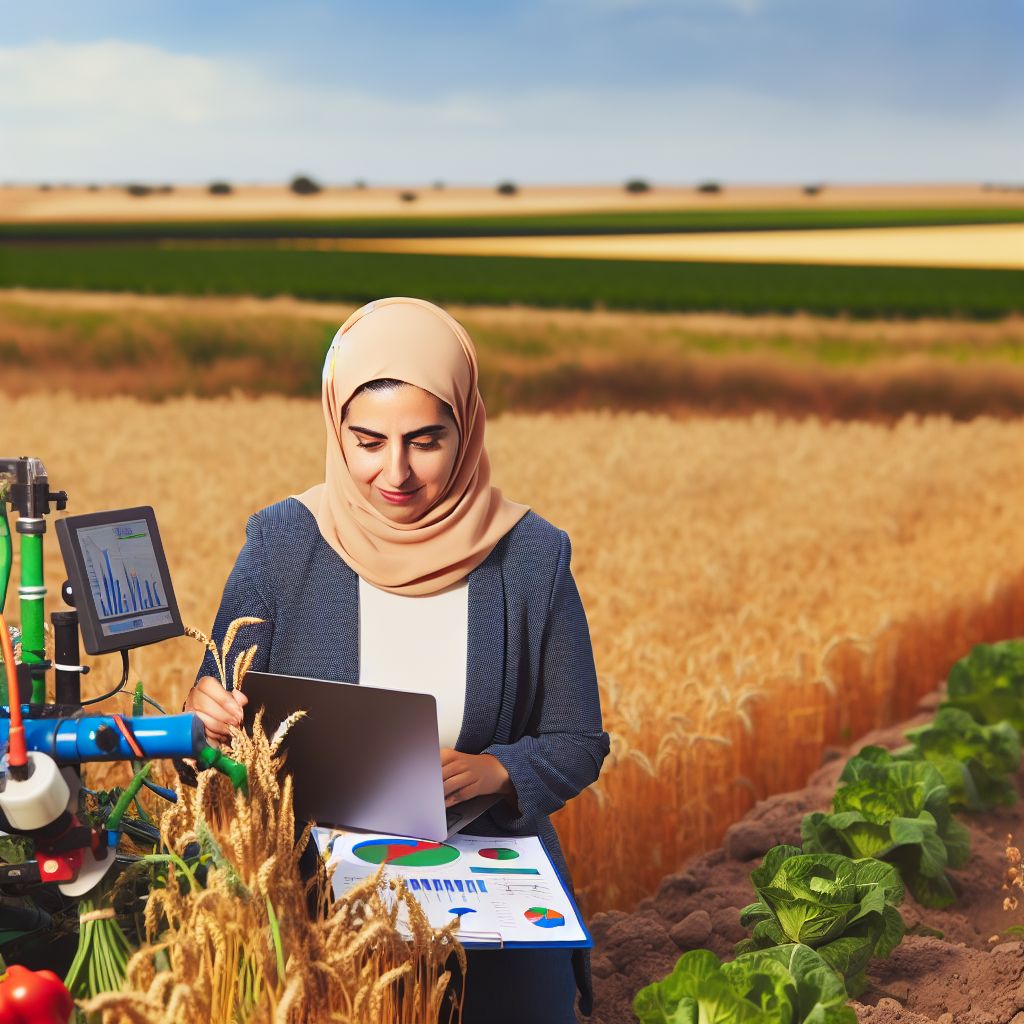
Implications of Decreasing Crop Yields on Agricultural Land Values
Understanding the Impact on Land Value
Decreasing crop yields significantly impact agricultural land values.
As crop productivity declines, investors perceive increased risks.
This perception leads to lower demand for agricultural land.
Consequently, land values begin to fall.
Furthermore, lower yields diminish the potential income for farmers.
Investors often reassess land investments based on projected yields.
Market Reactions and Economic Consequences
The agricultural market reacts swiftly to declining yields.
Farmers may struggle to cover operational costs under reduced revenues.
As a result, many may face financial challenges.
Moreover, lenders may tighten credit availability for farmers.
This tightening further depresses land values.
Consequently, farmland liquidity decreases in challenging market conditions.
Regional Disparities in Land Values
The effects of decreasing yields are not uniform.
Certain regions suffer more than others based on climate variability.
For instance, areas prone to droughts may see sharper declines.
Conversely, regions adopting resilient agricultural practices may fare better.
Market adaptation strategies influence land value stability.
Investment in irrigation and sustainable farming may mitigate impacts.
Long-term Trends and Future Outlook
Long-term declines in yields could reshape land value dynamics.
Farmers might shift toward alternative crops or sustainable practices.
Such shifts can influence demand and market prices.
Additionally, government policies may intervene to support affected regions.
Ultimately, the future of agricultural land values will depend on various factors.
These factors include technological advancements and climate change adaptation.
Case Studies: Regional Variations in Crop Yield Responses to Climate Change
Overview of Regional Variability
Climate change impacts crop yields differently across various regions.
These variations arise from local climate, soil conditions, and farming practices.
Understanding local responses is essential for effective adaptation strategies.
Showcase Your Farming Business
Publish your professional farming services profile on our blog for a one-time fee of $200 and reach a dedicated audience of farmers and agribusiness owners.
Publish Your ProfileNorth America: Corn and Soybean Challenges
In the Midwest, increased temperatures affect corn and soybean yields.
Studies show declines in yield when temperatures rise beyond certain thresholds.
Moreover, changes in precipitation patterns lead to drought or excessive moisture.
Farmers in this region adopt irrigation and crop rotation to mitigate these effects.
Africa: The Impact on Subsistence Farming
In many African nations, climate change poses significant risks to smallholder farmers.
Shifting rainfall patterns can lead to food insecurity and loss of livelihoods.
Crop failures may become more common due to erratic weather conditions.
Farmers increasingly rely on drought-resistant crop varieties for adaptation.
Asia: Rice Production in Flux
Rice production in Asia faces serious threats from rising sea levels.
The intrusion of saltwater affects crop yields in coastal areas.
Additionally, flooding events disrupt planting and harvest cycles.
Innovation in flood-resistant rice varieties is becoming crucial for farmers.
Europe: Changing Climate, Changing Yields
In Europe, climate change impacts grape yields significantly.
Warmer winters and changing weather patterns affect wine quality.
Some regions find that adapting grape varieties helps mitigate negative impacts.
Investments in technology enhance vineyard resilience against climatic changes.
South America: Coffee Cultivation Challenges
South American coffee growers face shifts in growing seasons due to climate change.
Higher temperatures can reduce coffee quality and yields.
Farmers are exploring shade-grown coffee as a potential adaptation strategy.
This method helps maintain cooler microclimates for coffee plants.
Insights for Future Research
Further research is necessary to understand local climate adaptations in agriculture.
Identifying resilient crop varieties will be crucial in various regions.
Collaboration between scientists and farmers can foster innovative solutions.
Ultimately, a comprehensive understanding of regional variations will support global food security.
Strategies for Mitigating Climate Change Effects on Agriculture
Adopting Sustainable Agricultural Practices
Farmers can adopt sustainable practices to improve resilience.
These include crop rotation, cover cropping, and agroforestry.
Such strategies enhance soil health and biodiversity.
Moreover, they improve water retention and reduce erosion.
Implementing Advanced Technology
Technology plays a significant role in modern agriculture.
Precision agriculture helps in optimizing resource use.
Drones and sensors monitor crop health and soil moisture.
Additionally, data analysis improves decision-making processes.
Enhancing Water Management
Efficient water management is crucial for coping with climate variations.
Irrigation systems should be designed for conservation.
Rainwater harvesting can supplement water needs during dry periods.
Furthermore, scheduling irrigation based on weather forecasts is beneficial.
Promoting Renewable Energy Use
Integrating renewable energy sources reduces carbon footprints.
Farmers can use solar panels and wind turbines on-site.
By tapping into renewables, they lower operational costs.
This creates a greener farming environment that benefits all.
Showcase Your Farming Business
Publish your professional farming services profile on our blog for a one-time fee of $200 and reach a dedicated audience of farmers and agribusiness owners.
Publish Your ProfileEngaging in Community and Policy Initiatives
Farmers should participate in local climate initiatives.
Collaboration with community groups can foster innovative solutions.
Furthermore, advocating for supportive agricultural policies is essential.
These policies can focus on sustainability and financial assistance.
Education and Training
Investing in education enhances the understanding of climate issues.
Farmers must stay informed about the latest research and practices.
Workshops and training programs can provide valuable insights.
Additionally, sharing knowledge among farmers promotes collective progress.
The Future of Farming in the Context of Climate Change
Adapting to New Challenges
Farmers face unprecedented challenges due to climate change.
Changing weather patterns disrupt traditional farming schedules.
A rise in temperature affects crop viability and yields.
Moreover, unpredictable rainfall alters irrigation strategies.
Farmers must adapt their practices to maintain productivity.
Innovative Practices on the Horizon
New agricultural techniques are emerging globally.
Precision agriculture enhances crop management effectiveness.
This method uses technology to optimize planting and harvesting.
Furthermore, crop rotation improves soil health over time.
Additionally, cover cropping helps prevent soil erosion.
Investing in Sustainable Solutions
Investments in sustainable technologies are crucial.
Renewable energy sources can power farming operations.
For instance, solar panels reduce reliance on fossil fuels.
Additionally, creating sustainable irrigation systems is essential.
These systems conserve water and improve efficiency.
Building Resilience Through Community
Collaborating with local communities strengthens farmers’ resilience.
Sharing resources and knowledge fosters innovation.
Cooperative models can improve access to technology.
Moreover, local workshops can share best farming practices.
Preparing for Future Market Changes
Climate change will impact agricultural markets significantly.
Shifts in consumer demand may alter crop selection.
Farmers need strategies to adapt their business models.
Diversifying crops can mitigate risks associated with climate change.
Policy Support for Farmers
Government policies play a pivotal role in farming futures.
Subsidies for sustainable practices can encourage innovation.
Investment in research supports new farming technologies.
Additionally, policies that promote conservation practices are needed.
Global Cooperation is Essential
Addressing climate change requires a unified global effort.
International collaborations can enhance knowledge sharing.
Global actions can also provide funding for sustainable practices.
Moreover, sharing successful strategies can benefit all farmers.
Additional Resources
Environmental Impacts of Food Production – Our World in Data
Showcase Your Farming Business
Publish your professional farming services profile on our blog for a one-time fee of $200 and reach a dedicated audience of farmers and agribusiness owners.
Publish Your ProfileClimate Change Impacts on Agriculture and Food Supply | US EPA

